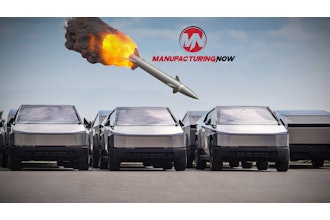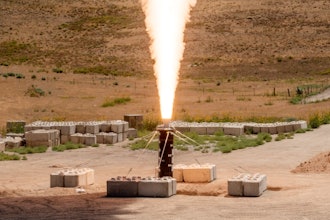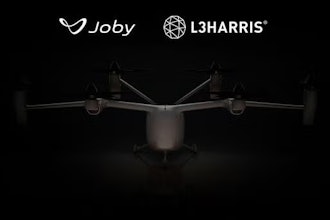
Plastic surgeons at Maastricht University Medical Center in The Netherlands have used a robotic device to surgically treat lymphedema in a patient. This is the world's first super-microsurgical intervention with 'robot hands'.
The surgeons used the robotic device to suture vessels of 0.3 to 0.8 millimeter in the arm of the patient. The robotic device, created by Eindhoven company Microsure, enhances the surgeon's precision, making this type of procedure easier to perform. The patient is doing well and the surgeons are enthusiastic.
Lymphedema, a chronic condition in which fluid builds up and causes swelling, is a serious disorder. It commonly occurs as a side effect of breast cancer treatment.
A relatively new and potentially much better treatment for lymphedema is a super-microsurgery in which lymphatic vessels are connected to blood vessels to restore the flow of lymphatic fluid and alleviate the swelling.
This intervention is, however, particularly difficult and stressful to perform given the extreme precision required from the surgeon. Worldwide, only a few surgeons are capable of carrying out this surgical technique by hand.
Microsure
Surgeons in Maastricht found the solution in Eindhoven. The surgical robot of Microsure, a spin-off of Eindhoven University of Technology and Maastricht University Medical Center, is controlled by a surgeon whose hand movements are converted into smaller, more precise movements which then are performed on the patient by a set of 'robot hands'.
The device also stabilizes any tremor in the surgeon's movements, which makes the procedure more controlled and thus easier to perform. The Microsure robot is expected to enhance a large number of microsurgical procedures and enable new interventions that are currently impossible to perform by hand.
This will lead to better patient outcome and lower healthcare costs due to a reduced rate of complication and less post-operative treatment.
Shan Shan Qiu Shao, plastic surgeon at Maastricht University Medical Center, says, "Microsure enables us to be very precise in our movements during procedures that need a surgical microscope. Their robot allows us to operate on minuscule lymph vessels and blood vessels with more ease, while getting better results for these complex and fatiguing interventions. Besides it is very convenient that, within microsurgery, we can operate on vessels of every size with this robot. Most importantly, of course, this is good news for the patients concerned."
"We are very pleased and proud that the first intervention using our robot has been a success, and that the surgeons are enthusiastic," adds Raimondo Cau, the technical brain of Microsure. "This proves that our technology is a key breakthrough in improving surgical care. As a next step, we aim to assist surgeons during other types of complex microsurgical procedures like tissue reconstructions after removal of a tumor. Using our device they will be able to perform surgery with better precision and fewer complications."






















